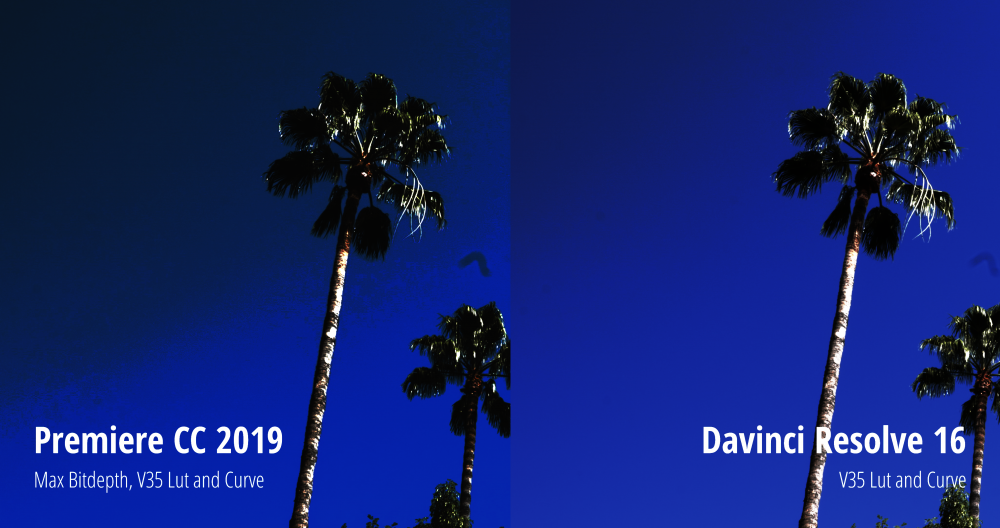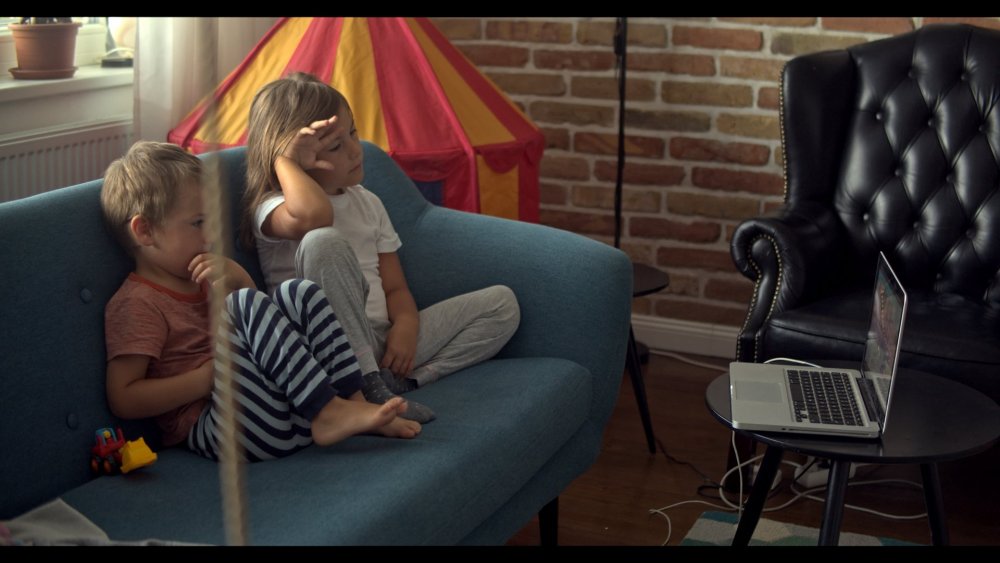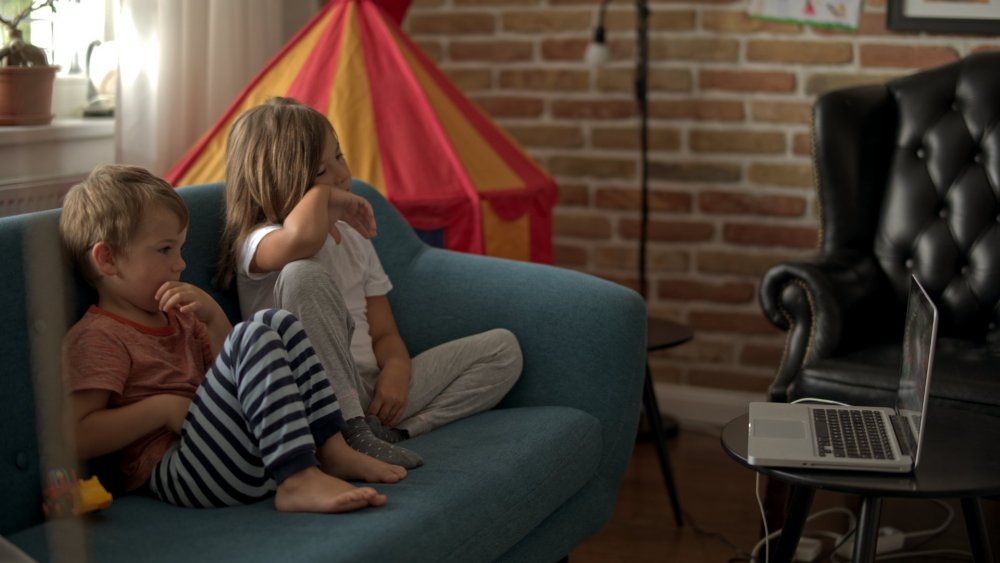
helium
-
Posts
83 -
Joined
-
Last visited
Content Type
Profiles
Forums
Articles
Posts posted by helium
-
-
24 minutes ago, Jonathan Bergqvist said:
Sorry pal, this is just plain wrong. Go see for yourself, your eyes are probably better than you think!

"Pal", the fact that at "close distance", you can see the difference saying nothing about a comfortable and customary viewing experience. Cropped without resizing, I can easily see the difference between hd and 4k on a cheap HD display. But have you really missed all those studies which set thresholds for being able to distinguish between HD and 4K, and how few viewers will be within them, either at home or in theaters, even forgetting the legions who watch on their phones?
I guess Steve Yedlin was wasting his breath?
And we haven't even begun to question whether more resolution is actually "better", and for what kind of material.
This fetish may be essential to marketing to new equipment and services, but does it really have anything to do with cinema, or storytelling as usually understood?
-
I guess I don't understand why anyone would build a business model around resolution, when the eye can't readily discriminate one from the other. HD really isn't good enough?
Consider also the implications: the S1H is an approved camera, but any number of Alexas aren't. What about S16mm as shooting format -- not good enough? Does this really make any sense?
And how will the content "last longer" in 4K, when folks can't readily tell the difference, least of all when streaming on Netflix? Anyone who still manages to see projected 35mm film is likely getting 700 lines, on a good day. Does that mean 100 years of cinema won't last, qualitatively, unless it's scanned to 4k, when most people actually interested in cinema would rather see a film print?
-
22 minutes ago, deezid said:
B) dynamic range is slightly better on the S1H but color science is another league. Especially the Pocket 4K has the tonal range of a potato in comparison and the ACES IDT is horrendously bad.
C) actual audiences pay for 4K.
Per B), I'm sorry, but that's just plain ludicrous. "Color science in another league", "tonal range of potatoes, etc" -- if you have objective measurements or comparative studies let's see them. Otherwise, it's just more internet noise. Besides, nobody is taking footage straight out of the camera and exhibiting it. If it's your view that BMPCC 4K footage is so poor it's beyond color correction, kindly link to baseline shots from both cameras, identical subject, and your sample grade of the S1H footage, which the BMPCC 4K can't match.
Actual audiences may pay for 4K but, again, this is marketing. And it's of no consequence to anyone likely to buy the camera as an A-cam -- people making low budget movies which will never get into theaters or be even remotely decisive of whether they can sell it to a streaming service.
-
A) nobody knows what Netflix's actual "quality" threshold is, after the camera meets the more or less arbitrary technical requirements.
B) unless everyone here is under contract with Netflix, the announcement doesn't mean a whole lot. Why is the S1H on the list, and the BMPCC 4k/6K aren't? Anything to do with actual image quality or for reasons of no consequence to anyone likely to buy any of the 3? Nobody knows.
C) And please, no "future proof" nonsense, in any but a marketing sense, which Netflix is itself promoting. My 4K is bigger and better than your HD! Actual audiences don't know or care, until they're told.
-
On 10/15/2019 at 5:50 PM, deezid said:
No, didn't use any 8 bit process - only the "32-bit" ones.
Also importing the ProRes clips into Premiere I created in Xmedia Recode still doesn't help either - while in Resolve everything is fine.High saturation and a steep curve yield the same artifacts in Resolve. There's a recent thread in the BMD forum, with someone complaining about much the same in BMPCC 4K footage, in Resolve. The shot was 4 stops over and then stressed in post.
-
15 hours ago, deezid said:
Would you kindly link to the original clip? Am not going to install Premiere, but I'm interested to see if the clip can be broken similarly in Resolve. I think it probably can, it's a just a matter of order of operations. Also, are you sure you did nothing in Premiere which required 8-bit processing? One 8-bit fx, and the whole thing goes 8 bit.
-
I haven't examined the video, but one glaring uncontrolled factor above is the LUT, and where in the chain it's being applied in Premiere. As far as I know -- it's been a long time since I worked in Premiere -- there's no way to apply a potentially destructive normalizing LUT without actual destruction. This is obviously not the case with Resolve, with its sequential nodes and/or Color Management.
For the extent of the claims you're making, effectively calling Adobe a liar, I think you want to eliminate that LUT variable.
-
Without knowing your exact workflow, it's impossible to draw any conclusions from those examples.
Again, what's the source of this claim that Premiere timelines(??) are 8-bit, which amounts to to saying that Premiere Lumetri is 8 bit....
-
Premiere *does* offer 32-bit internal processing, with the exception of some fx, which could still be 8-bit (32-bit fx are labelled as such).
Basic color correction should all be 32-bit Lumetri. What's the source of this claim that " it basically converts to 8 bit which causes many artifacts"?
-
5 hours ago, Jonathan Bergqvist said:
Well, who's saying we are all after the "cinematic" look in everything we do? This is 2019 after all and we live in a digital world. I would not recommend using digital noise as "cinematic noise" for anyone using compressed codecs, it's much easier introducing that kind of noise in post. And if it's going up on youtube/vimeo/instagram etc, maybe adding noise isn't a very good choice at all.
Aspirations to cinema drive most of the posts on this site, but that aside, if your delivery is to youtube or instragram, what's the point of this endless dispute over cameras and methods? What does it matter? Why this endless torture and inquisition, when nobody goes to these delivery services for their technical excellence?
It's this constant inanity, where folks post to youtube, and everyone else is supposed to swoon over one camera or another, when all you're looking at is a crude representation of color correction, production value and compression quality, calibrated to who knows what standard of display, which could be approximated by dozens of other cameras.
-
21 minutes ago, Jonathan Bergqvist said:
You will of course know when the "Right" in ETTR will damage the final image. ETTR is a common way for me using GH5 and C200, each with its own zebra-levels that make me not over ETTR - so that colors wont get skewed when bringing the exposure down. If you know what you are doing, ETTR won't affect highlight roll-off.

Or, when using a camera like the C200 or BMPCC 4K, or any other capable 10 bit 4:2:2 camera, you could just expose using the traditional approach, as do most cinematographers. It's ironic, because ETTR was suggested above as a way to avoid getting the bad results of youtube posters. And yet ETTR, at youtube levels of competence, is more likely to destroy images than "proper" traditional exposure techniques.
This preoccupation with noise is also a bit strange, for a so-called cinema camera. Cinema, after all, is full of noise, commonly known as grain.
-
12 hours ago, Mmmbeats said:
I don't see how ETTR would affect highlight roll-off. It's just a non-destructive shifting of data towards a different part of the curve.
Try substantially over-exposing BMPCC 4K footage (but shy of clipping), since that camera is party to this discussion. Observe color and contrast-- as well as highlight roll-off, and the lack of adjustability of highlights. How you concluded that it's "a non-destructive shifting of data" I don't know. Sensors don't work that way.
-
12 hours ago, crevice said:
No trick for vlog - same process most of us know about (exposure to the right).
Since when is ETTR an established and accepted practice for cinema, or even for 10-bit log shooting generally? For example, how can you assess highlight roll-off, if you're cramming everything into the upper end of the IRE range? I can't speak to the SH1, but what makes you think you get the best image out of BMPCC 4k/6K shooting ETTR?
Drawing the conclusions you've offered here, based on 8-bit DSLR exposure techniques, may be risky.
-
-
2 hours ago, deezid said:2 hours ago, deezid said:
Absolutely no sharpening at all and only slight hints of temporal but well implemented temporal noise reduction.
A much nicer image than the Pocket 4K sure. Color science is ahead of the pocket 4k as well.
If by "sharpening" you're talking about the halo thing with BMPCC4k/6K (in comparison to the S1/S1H), I think it's a misleading term, because the footage doesn't have the obvious visible characteristics of video sharpening. I've never heard anyone else complain of the BMD footage, in your terms. If it's there, nobody else is seeing it. Or they attribute the apparent greater resolution of cDNG to false detail.
As for color science -- people will argue. The reason I offered a version of those two shots in the S1 thread (you did one version, I did another--BMPCC 4K/S1) was to show people that apart from the obvious giveaways, like DOF and coverage, they couldn't tell them apart with even the most rudimentary adjustments. And we haven't started on the actual grading.
-
Unless the sets are factory-calibrated, which is impossible at consumer prices, the best they can do is remove the worst default settings, like motion smoothing, digital enhancements and image sharpening. Beyond that, it remains to be seen how accurate the picture is or if they even attempt color accuracy.
-
For anyone not persuaded 4K and HD are only for snowflakes, wusses and Steve Yedlin, the S1 is going for $2200 with vlog included.
-
The difference between the LUTs is so insignificant, compared to the likely grading you'd want to do on this shot, that it doesn't seem worth worrying over. The more important question might how much adjustment is available after the application of one LUT or another.
-
That's not really what I was saying. Just pointing out the obvious. A great camera without the production values only money can buy is useless, outside of the realm of the hobbyist or dreamer-only filmmaker.
And it's not a forgone conclusion that an actual no-budget movie benefits from a great camera, except to the extent the movie is so badly shot, it doesn't look like a great camera.
-
The great news is, there are now cameras, including these two, which produce a theatrical-quality cinema image for maybe 5% of the price of one year of film school. And for the cost of another credit or two, you get a grading suite which used to run $800/hr.
The bad news is, great DPs, lighting, production design and actors haven't gotten any cheaper. And let's not even get started on the writing.
-
These fairly trivial differences tend to fall away, in face of an actual colorist. Internet forums are one thing. The real world is another.
If you want to see video-looking footage, repair to the Arri Alexa site and download some of their clips of shrubbery, rocks and gravel.
-
39 minutes ago, deezid said:
Look at the comparison on top. there's nothing blown out in any of these two samples, but the BMP4K has significantly more noise in the shadows and some haloing going on in the girls hair.
The S1 looks basically perfect - maybe too perfect - in this example and clearly has an advantage in color science and dynamic range.
The S1 had a significantly brighter exposure, so I don't know that you can compare noise of the two shots. The haloing thing, seen with Prores and braw, is not visible to the naked eye, least of all with moving pictures as opposed to stills. Why the fuss about this one, I don't know.
Based on this one S1 sample, my guess is that the S1 does have more DR, but impossible to say without a rigorous comparison.
1Alex82: the blown-out window in the S1 shot is not really blown out. On the principle that we were doing a fast one-light adjustment, I let it go "as is". This didn't occur on the BMPCC 4K shot because the initial exposure was darker. Neither shot is actually clipped. The other issues you remarked on may have more to do with initial exposure levels, and the fact that there's much less DOF in the S1 shot, and consequently less contrast in those areas. Use of power windows would alter things somewhat.
-
-
On 8/10/2019 at 1:59 PM, Justforfun said:
Been a week now of doing my own vlog tests. For my kind of work this is all the DR I need. 1 stop over outside and 2 stop over when there's a good mix of shadow and highlight. Also setting my zebras to 95%. I'm actually quite satisfied with the eva1 rec 709 conversion LUT and just grade by look. Compared to XT3 and A7iii this is by far the most flexibility I have in post for color grading. I can push hue and saturation and even add color boost in resolve and I'm not seeing any banding or artifacts. I know RAW is still king but the convenience I'm getting with IBIS and decent AF is making my shooting that much easier. I wish they add more video assist features like false colors and vector scope.
I must ask: what eva1 rec. 709 conversion LUT? This is different from the Varicam lut supplied by Panasonic? And available where?





Panasonic S1H review / hands-on - a true 6K full frame cinema camera
In: Cameras
Posted
Dude, you're talking about everything and anything. Working backwards: 700 lines is about all you'll get in a movie theater, from a 35mm print There's a white paper online you can search for, if you're interested, among other sources. It's not a controversial observation. "LOL".
There is no ACES transform for the BMPCC 4K in Resolve, so it's not surprising you don't like the results. Again, your "color science is weak", etc. is typical internet-speak, where unsubstantiated claims vie for attention. One week it's the BMPCC 4K which is plastic and over-smoothing, then it's the S1H which blurring detail. Next month, it's the BMPCC 4K which is too sharp, unless you prescription for downsampling is followed. Or Premiere is 8 bit and Resolve is 32. Until not.
This stuff never stops, I guess it keeps the forums going.